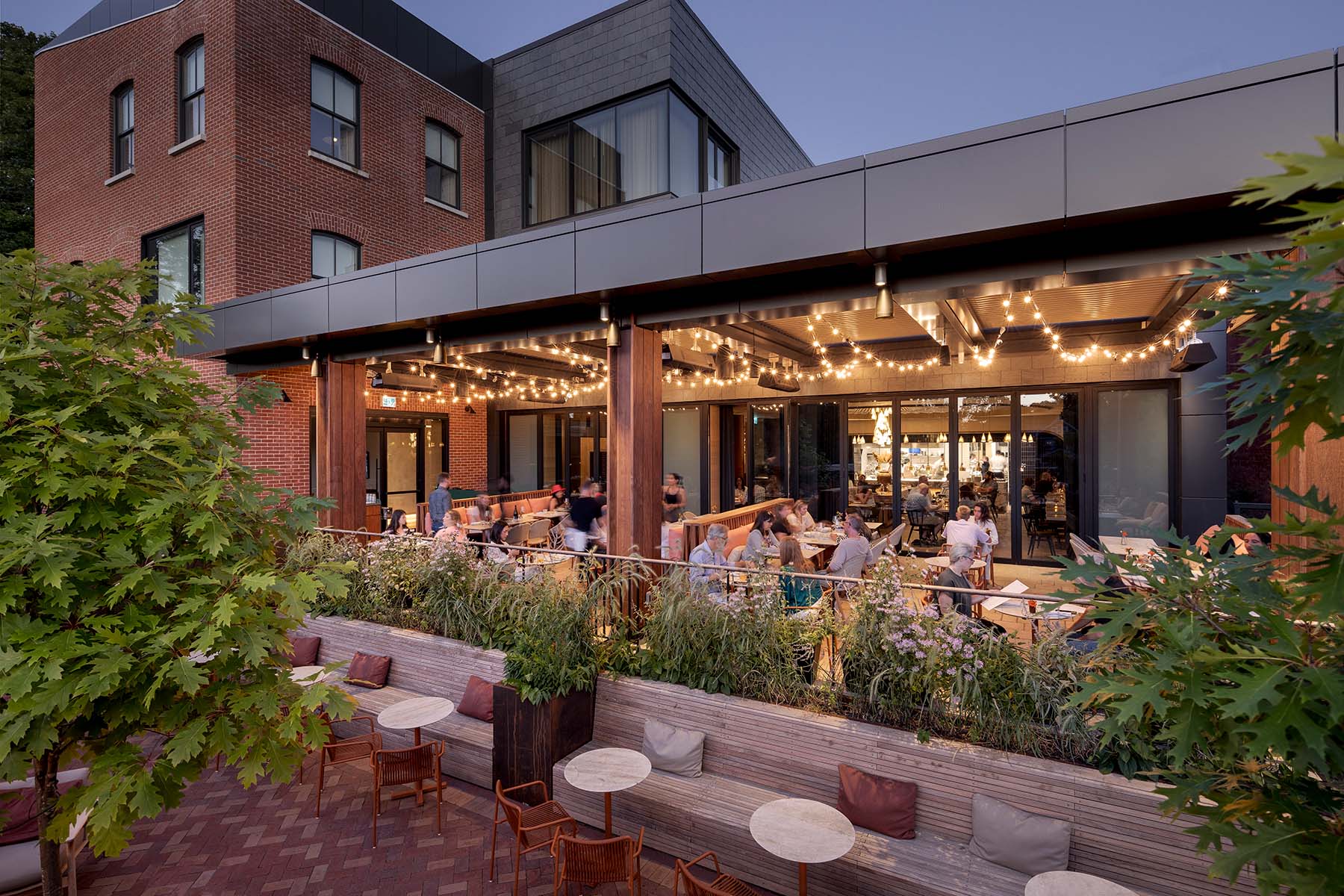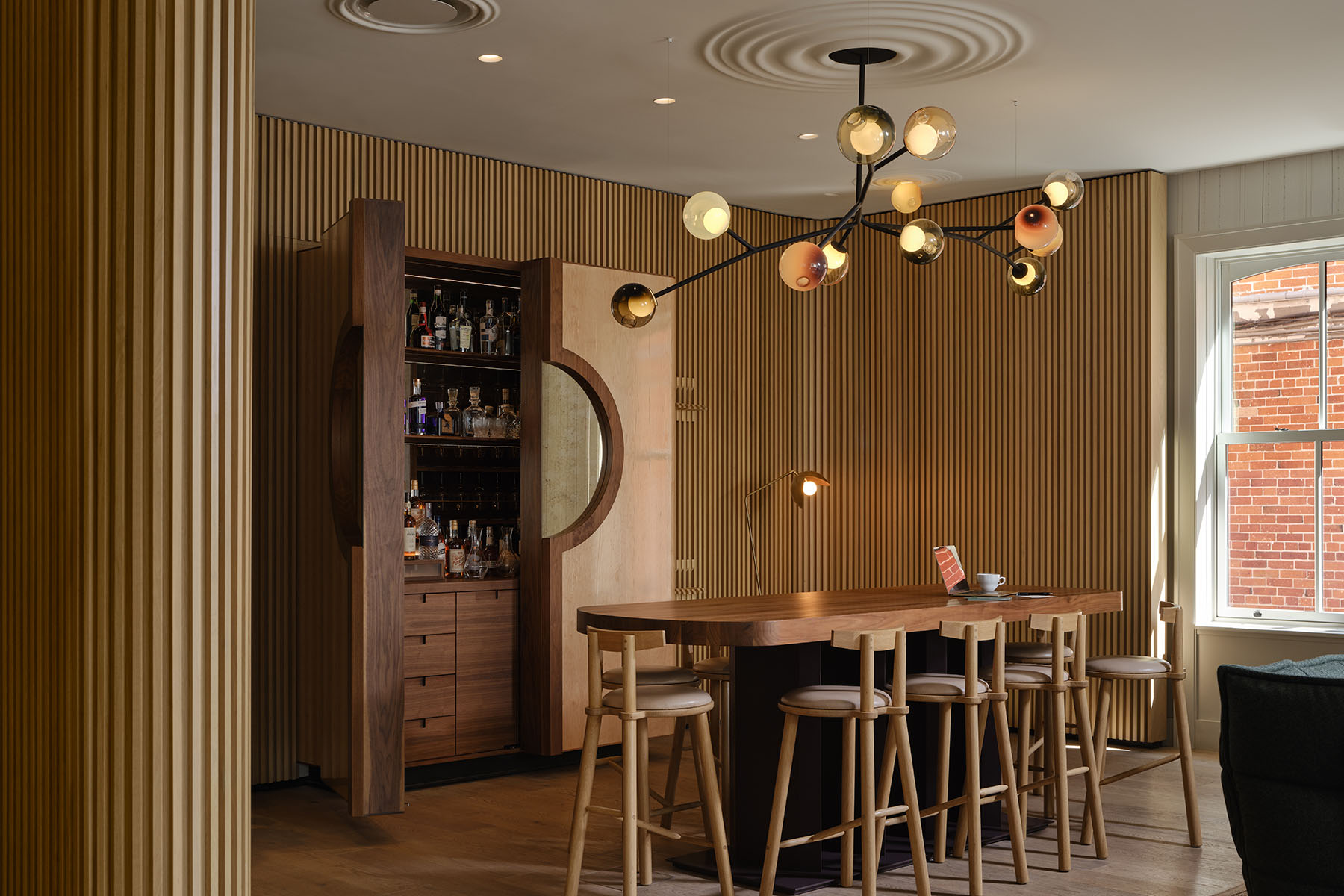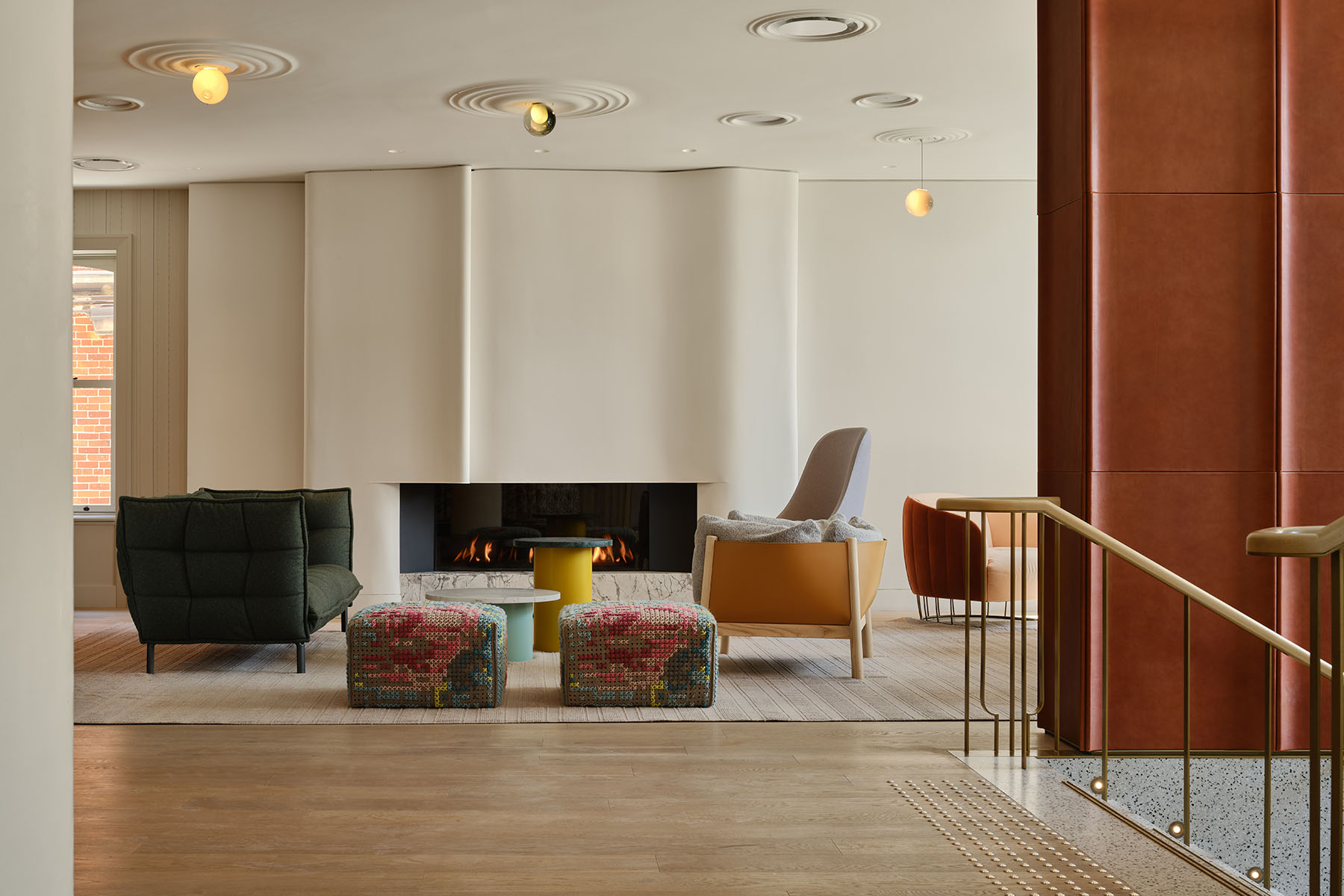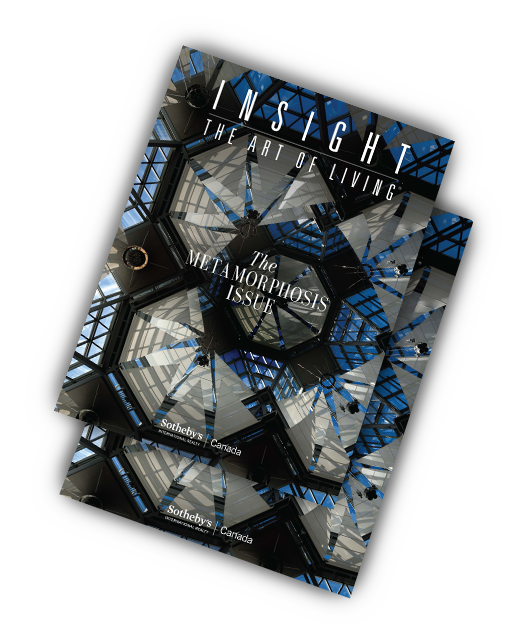The Royal Hotel in Picton, Ontario, pays homage to its storied past and highlights top-shelf design with a side of community.
Historic Main Street in Picton — the largest town in Prince Edward County, on the eastern shores of Lake Ontario — is home to chic boîtes, a bookshop and a consignment store, which rival any of those in the three major cities within a 3.5-hour drive — Toronto, Montreal and Ottawa.

But in this community, with its share of heritage buildings and historic sites, it’s The Royal Hotel that’s getting all the attention these days. The 140-year-old building — once derelict, with missing windows, moss-covered corridors and waterlogged floors — underwent a meticulous decade-long restoration. Reopened in early 2022, this 31,000-square-foot hotel/restaurant/meeting venue fuses thoughtful nods to the property’s past with modern gestures that celebrate the community. “It was once a place where people came to meet and congregate — a hub back in its glory days,” says Sol Korngold, The Royal’s general manager and the son-in-law of Greg Sorbara, who purchased the hotel in 2013. “There was never any question as to what we’d do with the building. We envisioned bringing it back to the hotel and [gathering place that] it was in the beginning.”
The area’s agricultural industry was blossoming in the 1870s, so it made sense for a railway hotel to open in 1881, after the train tracks running west were laid. The Royal was for swish visitors; it was en vogue to be seen descending the grand staircase or enjoying libations in the prim dining room.

The decades that followed saw good years and lean for the establishment — the barley and canning businesses were lucrative and, later, a military training facility moved in. But by the 1960s and ’70s, the hotel had become a watering hole, and then a rooming house. When Korngold and the Sorbaras came along, the building had been shuttered for years, sitting vacant, neglected and in severe disrepair, on the brink of potential demolition. “It was in such a state that we had to wear steel-toed boots and masks to go inside,” recalls Korngold. “Mould crawled up the walls. And when we walked around the lower level, with every step, we sank an inch and a half into wetness.”
Before leaving a successful career in software and banking and dedicating himself to The Royal’s management, Korngold engaged Giannone Petricone Associates Inc. Architects (GPA), which is renowned for a plethora of remarkable and unique projects, such as Toronto’s Daniels City of the Arts and the still-in-development Volta Winery in the County. “I’d seen Ralph Giannone and Petricone’s work and what they’d done for friends, and I knew they’d be right for this. I just didn’t know how right they’d be. They hit the mark so beautifully,” Korngold says.

Petricone emphasizes the immediate recognition of the building’s significance and the collective vision to breathe new life into Picton’s historic Main Street. “There was a mutual appreciation between us and the family for what [The Royal] could be. We all saw the limitless opportunities the property afforded,” she notes. “From a design perspective, it was such a delight to really bring this building into its next generation. We understood [that] if we did our job, this could really be transformational for the County.”
For Petricone, seeing the rundown space was a sublime experience and inspired a series of sketches for how The Royal could be reconceptualized. The architects’ first move was a bold decision that involved cutting off a quarter of the building. “It was quite dark inside, and removing the quadrant would fill the interiors with natural light. And it would allow us to create a terrace on the second floor,” explains Petricone. Their second key architectural and design choice was to go beyond their obligations from a heritage-protection perspective when they updated the street-level façade, opting to only keep three of the four walls. “We took cues for the façade from the top two floors. We reinstated the lines of the original brick pilasters and sourced heritage brick from the Netherlands to match the originals.”

Navigating the project’s parameters, Petricone found inspiration in its limitations, claiming it’s often where she found the most interesting design solutions. “The idea of the circular impressions on the ceilings feel like the rosettes in Victorian hotels, but it’s also a callback of the space being waterlogged and the rippling expresses this,” she says. Big oak fins in the lobby that look like wall studs waiting to be dressed, the gilded exterior balustrade and elevator cage done in construction-grade metal, scalloped Corian vanities in the guestrooms, “petrified” Victorian patterns, furled plaster around the fireplaces and tartan tile floors — these are all illustrations of the intricate, playful features GPA imagined and flawlessly executed. “We had a lot of fun with these details and leveraged the personality of the space while nudging it into a different cultural status instead of trying to recapture or restore the Victorian hotel of the past,” notes Petricone. Arguably the grandest gesture in the space is the whimsical ceiling rosette in the main restaurant, reinterpreted to emulate the underside of a mushroom. “It’s a great example of the quintessential Victorian ceiling rosette, but we turned it into the country version. It was inspired by The Royal’s rural setting.”
Getting to know the ebbs and flows of Prince Edward County was vital to the project’s success, according to Petricone, and they were resolute on making The Royal an accessible gathering place where guests and locals could congregate. Once solely a 28-room hotel for overnight guests, The Royal now offers a multi-faceted experience that’s inclusive of an award-winning restaurant, a few bars (including The Counter Bar, which transforms from morning café to late-night hot spot), a bakery, retail shop, pool, spa, sauna, gym and garden patio. It lets both visitors from afar and those who live around the corner share experiences in the centre of Picton.
“When you’re a developer originally from Toronto, you have to overcome the perception that city folks are coming in to change things,” says Korngold. “But the resurrection of The Royal has turned it into a community hub for locals in the County once again, and that’s what makes me most proud about this beautiful transformation.”
By Lisa van de Geyn — *Insight: The Art Of Living Magazine – The Metamorphosis Issue.



